Monday, November 1, 10 AM to 11 AM, ET
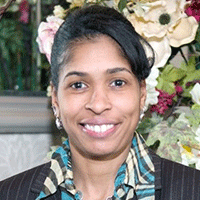
Aprille Joy Ericsson, Ph.D.
Aerospace Engineer, Technologist, Project and Program Manager, Professor, STEAM Youth Educator NASA GSFC, Instrument Systems and Technology Division, New Business Lead
Keynote Title: Making Lemonades out of Lemons-Technology Developments During the Age of COVID-19
Abstract: The COVID-19 pandemic derailed the best-laid plans. And yet, the response from the engineering and research community has been remarkable, wrote Tom Costabile. As I say, turning Lemon into Lemonade. 2020-21 has been a period to remember and there are some innovations worth noticing. Turning the pandemic productivity boom into long-term growth as technology, particularly artificial intelligence and automation fueled by pandemic-induced business changes and prospects of aggressive government funding, has helped the economy take off. Learn about some of the last 18 months strides in technology, such as: Strides in Artificial Intelligence; Autonomous robots that disinfect (UVLight) and deliver necessities; Advanced manufacturing producing 3D-printed concrete, and Open sourced face shields; as well as, Quantum theory applications of unhackable internet and computing; and lastly, Satellite mega-constellations, asteroid sample retrieval and helicopters on Mars.
Biography: Aerospace engineer Aprille Joy Ericsson's career is distinguished by "firsts," she considers her most prestigious the honor of being the first person of color to receive The Washington Award from the Western Society of Engineers. She is the first African-American female to receive a Ph.D. in Mechanical Engineering from Howard University (HU) and the first African-American female civil servant to earn an Engineering Ph.D. at the NASA Goddard Space Flight Center (GSFC. There she currently serves as New Business lead for the Instrument Systems and Technology Division (ISTD). During her 25+ year tenure with NASA, Dr. Ericsson has worked as Aerospace Engineer, Technologist, Project and Program Manager and Executive. She has taught at both Howard University, University of Maryland, and Bowie State University. Dr. Ericsson has been named one of the top 50 minority women working in science and engineering fields by the National Technical Association and she was ranked 8 of 20 on the 2016 list of the Most Powerful Women Engineers by Business Insider.
Ericsson was born in Brooklyn, N.Y. Raised in the projects of Bedford-Stuyvesant, she began her education being bussed to an elementary school in Brooklyn. "It didn't take me long to realize I had an aptitude for mathematics and science," she recalls. In her last year of junior high school, she won second place in the science fair and scored high on all her regent and citywide exams. She passed all entrance exams for New York’s technical high schools, but decided, at age 15, to move to Cambridge, Mass., where she lived with her grandparents and attended on scholarship the Cambridge School of Weston. There, she continued to excel academically and was accepted into the Massachusetts Institute of Technology (MIT) Minority introduction To Engineering, Entrepreneurship and Science program. Ericsson coupled her early academics with extracurricular activities, including playing basketball and other sports. "I believe in living a well-rounded life," she explains. Throughout her life she has competed in basketball, flag football and softball. She played on National ranked softball teams which have won two Coed Worlds, numerous State Championships, and a Women's military World tournaments. She has been voted women's MVP for coed flag football. Dr. Ericsson’s dedication to youth has also continued as a basketball, softball, baseball and T-ball Coach. She also enjoys skiing, tennis and cycling for fun.
After graduating high school, she attended the MIT, where she earned a bachelor's degree in Aeronautical/Astronautical Engineering. During her time there, she was involved in several Aerospace research projects and lead the research for Manned Mars Mission crew systems for interplanetary vehicles for her senior project. "These projects generated my strong desire to participate in manned space missions," she explains. She applied to NASA's astronaut program, but a history of asthma placed her on medical review.
She earned her masters and doctoral degree at Howard University (HU), Washington, D.C., where her research focused on developing practical design procedures for future orbiting space structures, like the Space Station. She received several prestigious internships, fellowships, and grants, including the NASA GSFC SIECA Summer Institute for Engineering and Computer Applications, the NASA/HU Center for Studies of Terrestrial and Extraterrestrial Atmospheres, the Wright Patterson Air Force Laboratories, the NASA DC Space Grant Consortium, Dorothy Danford Compton and HU Terminal Dissertation Fellowships.
In addition to receiving funding from the NASA, while there she also held two internships and COOP positions while finishing her degree. During her first summer at GSFC she won the first student presentation competition, and as a result it is mandatory for all GSFC interns to take her seminar on "Giving Outstanding Technical Presentations". Because of that experience, she was offered a full-time job there after she received her Ph.D. "That's how you do it," she says. "Once you get your foot in the door and meet people, you can show them you’re capable of doing the work."
As an attitude control systems specialist her satellite missions have included projects X-Ray Timing Explorer, Tropical Rain Forest Measurement Mission, and the Wilkerson Microwave Anisotropy Probe. For these projects, Ericsson developed and used programs for dynamic modeling simulation, which are invaluable in predetermining the dynamics and structural reactions of spacecraft. Following those assignments, Dr. Ericsson was detailed to NASA HQs as a Program Executive for Earth Science, and a Business Executive for Space Science. She returned to GSFC for a long tenure as an Instrument Project Manager, where she led spaceflight instrument teams and proposal developments for instruments ranging from $15M to $500M. More she served as the Capture Manager for a proposed $250M Astrophysics mid-sized Class Explorer, called STAR-X. Prior to that proposal development, Dr. Ericsson served as the GSFC Program Manager for SBIR/STTR. Formerly, she served as the Deputy to the Chief Technologist for the Engineering and Technology Directorate and Acting Associate Chief Technologist of ISTD.
Ericsson's work as an aerospace engineer has presented many opportunities to fulfill her dream of advancing space flight. Additionally, she has traveled extensively throughout the world, presenting papers on her research in the US, Canada, Germany, Netherlands, England, South Africa and most recently Mexico. She has also been a Guest Researcher at Radcliffe Institute/Harvard University and she has acquired a Leadership & Management Certificate from John Hopkins University.
She speaks to young people across the country – especially minorities and women – to encourage them to follow in her footsteps. She mentors student every year and 20 years ago she created an email pipeline for groups underrepresented in Science, Technology, Engineering and Mathematics (STEM) disciplines. This pipeline distributes opportunities for employment, grants, internships, and fellowships. "I feel obligated to spur the interest of youth particularly minorities and females in STEM," she says. "Without diversity in these fields, the United States will not remain technically competitive." She currently serves as an Advisor to the DMV NSBE Jr. Chapter at Howard University. She is lead Coach for the chapters FIRST Lego League Robotics teams. Dr. Ericsson has served as former Board member, some worth noting are: HU Trustee; International Black Aerospace Council; HU Middle School of Mathematics and Science Chair. Currently, she is a Board member of: MIT’s Industry Advisory Council for Minority Education; the National Academies of Science, Engineering and Medicine Board of Higher Education and Workforce; Advisory Council of Organization Black Aerospace Professionals; and Chair of the Advisory Council of HU Department of Mechanical Engineering.
Dr. Ericsson's many honors and awards include: an Honorary Doctor of Science from Medgar Evers College; The Tau Beta Pi Alumni of Distinction; The Washington Award; The Women's Network "Top 18 Women Who Will Change the World"; National Technical Association's "Top 50 Minority Women in Science and Engineering"; the Women in Science and Engineering Award for Engineering Achievement; the Black Engineers Award Conference Special Recognition Award; and several NASA Goddard Space Flight Center Honor Awards which include an Excellence in Outreach and Technical awards for several Space mission projects.
Dr. Ericsson has always pursued are ambitious undertakings and has never shied away from aiming high. In fact, she lives by these words of Norman Vincent Peale: "Shoot for the moon. Even if you miss, you'll land among the stars."
Thursday, November 4, 10 AM to 11 AM, ET
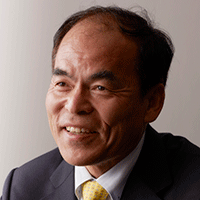
Shuji Nakamura, Ph.D.
Professor, University of California-Santa Barbara, 2014 Nobel Laureate in Physics Recipient, ASME 2021 Richard J. Goldstein Energy Lecture Award Recipient
Keynote Title: The Invention of Blue LED and Future Lighting
Abstract: In the 1970's and 80's, efficient blue and green light-emitting diodes (LED) were the last missing elements for solid-state display and lighting technologies due to the lack of suitable materials. By that time, III-nitride alloys were regarded as the least possible candidate due to various "impossible" difficulties. However, a series of unexpected breakthroughs in the 1990's totally changed people's view angle. Finally, the first highly efficient blue LEDs were invented and commercialized at the same time of 1993. Nowadays, III-nitride-based LEDs have become the most widely used light source in many applications. Laser lighting using blue/violet lasers is also coming as a future lighting with an ultimate point light source.
Biography: Shuji Nakamura was born on May 22, 1954 in Ehime, Japan. He obtained B.E., M.S., and Ph.D. degrees in Electrical Engineering from the University of Tokushima, Japan in 1977, 1979, and 1994, respectively. He joined Nichia Chemical Industries Ltd in 1979. In 1988, he spent a year at the University of Florida as a visiting research associate.
In 1989 he started the research of blue LEDs using group-III nitride materials. In 1990, he developed a novel MOCVD system for GaN growth, which was named Two-Flow MOCVD. Using this system, he could grow the highest crystal quality of GaN-based materials. As his private opinion, the invention of Two-Flow MOCVD was the biggest breakthrough in his life and his GaN-based research. In 1993 and 1995 he developed the first group-III nitride-based high-brightness blue/green LEDs. He also developed the first group-III nitride-based violet laser diodes (LDs) in 1995. In 1996, his former company, Nichia, started selling white LEDs using his invention of blue LEDs. These white LEDs have been used for all kinds of lighting applications in order to save energy consumptions. The electric consumption of white LEDs is about one tenth in comparison with that of conventional incandescent bulb lamp nowadays. In 1999, Nichia started selling the violet laser diodes for the application of blue-ray DVDs.
Professor Nakamura had received numerous awards for his work, including the Nishina Memorial Award (1996), the Materials Research Society Medal Award (1997), the Institute of Electrical and Electronics Engineers Jack A. Morton Award, the British Rank Prize (1998), the Benjamin Franklin Medal Award (2002), the Millennium Technology Prize (2006), the Czochralski Award (2007), the Prince of Asturias Award for Technical Scientific Research (2008), The Harvey Award (2009), and the Technology & Engineering Emmy Award (2012) awarded by The National Academy of Television Arts & Sciences (NATAS). He was elected as a fellow of the U.S. National Academy of Engineering in 2003. He is the 2014 Nobel Laureate in Physics for the invention of efficient blue light-emitting diodes which has enabled bright and energy-saving white light sources. Prof. Nakamura received the 2014 Order of Culture Award in Japan. He was inducted into the National Inventors Hall of Fame in 2015. He received the 2015 Charles Stark Draper Prize for Engineering and the 2015 Global Energy Prize in Russia. Since 2000, he has been a professor of Materials and Electrical & Computer Engineering at the University of California, Santa Barbara. He holds more than 200 US patents. He has published over 650 papers in his field. Prof. Nakamura is the Research Director of the Solid State Lighting & Energy Electronics Center and The Cree Chair in Solid State Lighting & Displays. He co-founded Soraa Laser Diodes (SLD), Inc. in 2013, which operates vertically integrated fabrication facilities in California’s Silicon Valley and Santa Barbara.
Friday, November 5, 10 AM to 11 AM, ET
Keynote Panel
Title: Manufacturing the Future: Innovations at Manufacturing USA Institutes
Abstract: This Keynote Panel will describe how collaboration via a public-private partnership is connecting industry and academia to solve the most challenging advanced manufacturing problems. Manufacturing USA institutes create a neutral collaboration space that accelerates manufacturing technology development for use by industry, resulting in breakthrough innovations that will have transformational impacts on future U.S. supply chains. This panel will highlight diverse and exciting projects and speakers to showcase technology advancement in areas such as Smart, Secure, Clean, and Resilient Manufacturing. Listen to success stories by project stakeholders in critical areas related to the broad themes of IMECE. A live Question and Answer session will be featured so that the audience can engage with these industry leaders.
Moderator:
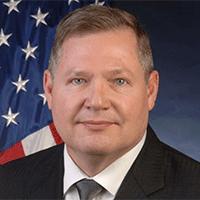
Mike Molnar is the founding director of the Office of Advanced Manufacturing (OAM) at the National Institute of Standards and Technology (NIST). In this capacity he is responsible for NIST extramural advanced manufacturing programs and liaison to industry and academia. Mike is also the founding director of the Advanced Manufacturing National Program Office (AMNPO), an interagency team with core staff hosted at NIST. This interagency team works to coordinate federal activities in advanced manufacturing, and is the Congressionally designated National Program Office for Manufacturing USA – the National Network for Manufacturing Innovation.
Mike joined NIST in 2011. Prior to federal service Mike had a 30-year industry career in advanced manufacturing, with leadership roles in manufacturing technology development, corporate manufacturing engineering, capital planning, metrology, quality systems, automation, computer integrated manufacturing, and industrial controls for manufacturing competitiveness. Mid-career Mike served as the manufacturing policy Fellow in the White House Office of Science and Technology Policy.
Mike is well known in industry and academia, with over thirty years of leadership roles in manufacturing professional societies and associations – most recently as the President of the Society of Manufacturing Engineers. He is a licensed Professional Engineer, Certified Manufacturing Engineer, and was elected Fellow of both the American Society of Mechanical Engineers and the Society of Manufacturing Engineers. Mike earned an Executive MBA from the University of Notre Dame, and a Bachelors in Mechanical Engineering and Masters in Manufacturing Systems Engineers from the University of Wisconsin.
Panelists and Projects:
Clean Energy, Smart Manufacturing, Innovation Institute, CESMII - CA
Panelist: Dr. Mark McGinley, Infrastructure Research, Civil and Environmental Eng., U of Louisville
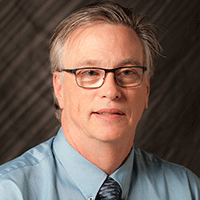
Cement manufacturing is energy-intensive (5GJ/t) and comprises a significant portion of the energy footprint of the composite material. Incorporating modern monitoring, simulation and control systems will allow lower energy use, lower environmental impact and lower costs. Using predictive process models, data analytics, sensors and machine learning, a Smart Manufacturing for cement control system platform will be developed.
Dr. W. Mark McGinley, PE is a professor in Civil Engineering at the University of Louisville and is a structural engineer and building scientist with more than 30 years of research and forensic engineering practice in building systems. He joined the Civil & Environmental Engineering Department faculty at the University of Louisville from North Carolina A & T State University, where he was Chair of the Civil, Architectural, Agricultural & Environmental Engineering Department. He received his PhD, MSc, and BSc in Civil Engineering at the University of Alberta and is a registered professional engineer.
Mark is a recognized expert in masonry building systems, in particular masonry building envelopes. His research has included basic research on the structural performance of masonry walls, energy performance of buildings, and multidisciplinary efforts on the evaluation of the energy systems of existing buildings. He has conducted demonstration projects to evaluate condensing heat exchangers and the thermal mass effects of night time ventilation, materials research, water penetration experiments on envelopes, and the building envelope performance of brick veneer and steel stud wall systems. He is the Principal Investigator on the CESMII/DOE-funded Smart Manufacturing of Cement. Over 135 publications have resulted from his research efforts. Dr. McGinley is also n a number of technical societies leading many committees in The masonry Society and ASTM. He was granted the honor of TMS Fellow in 2018. He received the ASTM Gilbert C. Robinson Memorial Award in 2001. In 2008, he received the ASTM Award of Merit and honored as an ASTM Fellow for his contributions.
America Makes – OH
Panelist: Jesse Boyer, Technical Fellow for Additive Manufacturing, Pratt & Whitney (Raytheon Technologies),CT
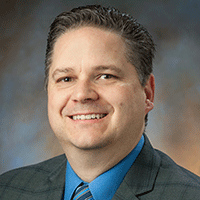
Thermal management in aircraft engines is a challenge with many boundary conditions both in the aircraft environment and in the manufacturing process. Through collaboration with the Manufacturing USA institute America Makes and its members, additive manufacturing technology was applied to the development of thin-walled heat exchangers that enabled breakthrough improvements in material savings, efficiency and design geometry.
Jesse Boyer is currently the Additive Manufacturing Fellow at Pratt & Whitney (P&W), and previously the Fellow of Advanced Manufacturing Metrology. Jesse holds two BSE degrees from the University of Michigan in Aerospace Engineering and Naval Architecture & Marine Engineering. Jesse has worked a variety of engineering and management positions throughout his ~25+ year career in automotive at General Motors and at P&W, including roles as a Process Engineer, Industrial Engineer, Methods Specialist and Technology Manager for Military Blades, Technology Manager of the Capital Equipment Procurement Group, and the Manager of the Advanced Manufacturing Metrology Group (including Computed Tomography, Process Modeling and Additive Manufacturing). Current work involves the understanding of key process variables to control additive manufacturing processes, in-process monitoring for production, and the use of the Digital Thread related to inspection and additive manufacturing.
Over the many years working in manufacturing, he has led numerous successful projects implementing advanced and traditional gaging, as well as, leading the manufacturing effort to bring metal additive parts into production at Pratt & Whitney.
Jesse has represented P&W on several committees and conferences including the AESQ Standard for MSA, recently the ASTM F42.01 Sub-Committee Chairman, and the role of Chair of the Executive Committee of America Makes. He has over 15 patents in the areas of manufacturing processes, is published in the SME Manufacturing Engineering magazine, and served as guest editor of a well-known manufacturing journal. He is an undergraduate instructor at the University of Connecticut for manufacturing and instrumental in the curriculum development at the University of Hartford to address the gap of manufacturing inspection capable engineers ready for the workforce in the New England Area.
The Institute for Advanced Composites Manufacturing Innovation, IACMI – TN
Panelist: Ms. Dana Swan, Manager - Technical Development Manager, Arkema Inc.
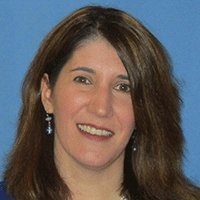
Thermoplastic composite advancements for wind turbine blades. Developments in thermoplastic materials help enable large-scale production at lower costs, increase end-of-life recyclability and aid in job creation for American workers. Thermoset composites reinforced by fiber are the current material of choice for large-scale wind turbine components; however, challenges in manufacturing costs, performance, and recyclability are limiting. IACMI will investigate new developments in thermoplastic materials with industry partners to lower production costs, improve recyclability of wind turbine blades and expand applicability to components demonstrated at large scale. The long term impact could reduce costs and improve reliability in composite structures, which allow for process improvements on a larger scale, increasing energy efficiency.
Dana Swan, Technical Development Manager, at Arkema Inc. is responsible for development for the Elium® liquid thermoplastic composite resin. Previously, she held the positions Business Development Manager and Lead Scientist for the Elium resin. Dana has 21 years of experience in R&D, Technical Service and Business Development at Arkema Inc's King of Prussia, PA headquarters. During that time, she was instrumental in the development of new technologies on projects spanning a variety of markets and Arkema business units including projects in the paint and coatings, solvent and catalyst fields as well as composites. Originally from the Pittsburgh area, she received her Bachelor's of Science in Chemistry from Allegheny College and her Master's in Chemistry from the University of Virginia.
Advanced Robotics for Manufacturing
Panelist: Juan Aparicio, VP of Product - Ready Robotics
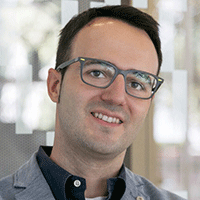
The ARM Institute accelerates the development and adoption of innovative robotics technologies that are the foundation of every advanced manufacturing activity today and in the future. We leverage a unique, robust and diverse ecosystem of partners across industry, academia and government
Juan Aparicio is the VP Product at Ready Robotics, where he is accelerating the adoption of automation with an ease-of-use and open platform approach to robotics. Before that, Juan was the Head of Advanced Manufacturing Automation for Siemens, where he led a team of researchers and engineers in the area of Robotics + AI, in Berkeley, California. In addition to his job at Ready, he is a Technical Advisor for the Advanced Robotics in Manufacturing (ARM), member of A3’s AI Tech Board and Skydeck advisor. Mr. Aparicio has been awarded the MIT Tech Review innovator under35 2019 Europe in the Pioneer category. In 2020, he was awarded Siemens Inventor of the year and the prestigious Thomas Alva Edison Patent Award.
Summary of Talk: As a manufacturing USA institute, ARM fosters and accelerates the adoption of transformative manufacturing technologies and worker education so that the US doesn't lose its manufacturing prowess. ARM has 240+ member organizations that span government, industry, and academia to secure our nation’s future. READY robotics is one of those ARM members helping US manufacturers with their education and workforce development commitment, with products and solutions that make robotics and automation more accessible to US manufacturers, large and small. In this talk, Mr. Aparicio will introduce the ARM institute, talk about the state of robotics in the US, answer the question on "why aren't robotics more widespread?", and end up with a success story of workforce reskilling and upskilling.